Shalescapes of West Lothian explores the historic shale oil industry of West Lothian, Scotland, which produced roughly 75 million barrels of oil and 500 billion cubic feet of gas between 1856 and 1962; marking the site where fossil fuels were first extracted from the earth on an industrial scale. Traces of the industry are still visible across this post-extraction landscape in the form of spoil heaps or ‘bings’. Once seen as a blight, these huge landforms are now recognised for their biodiversity, providing refuge to flora and fauna amidst a predominantly urban and agricultural landscape.
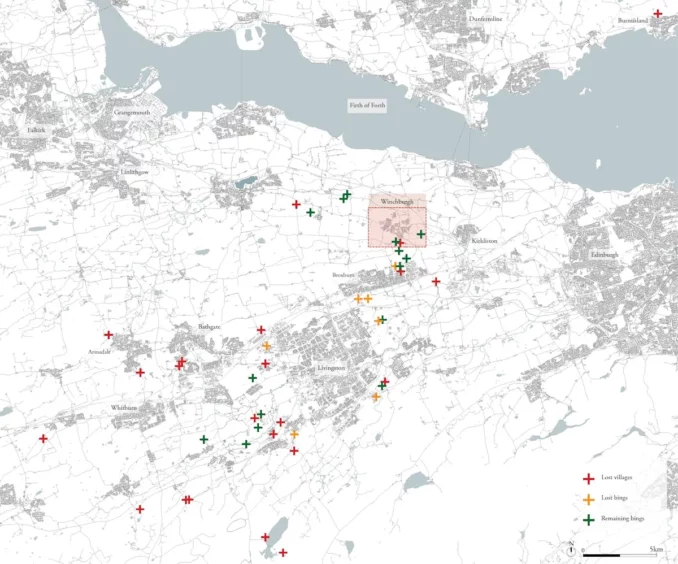

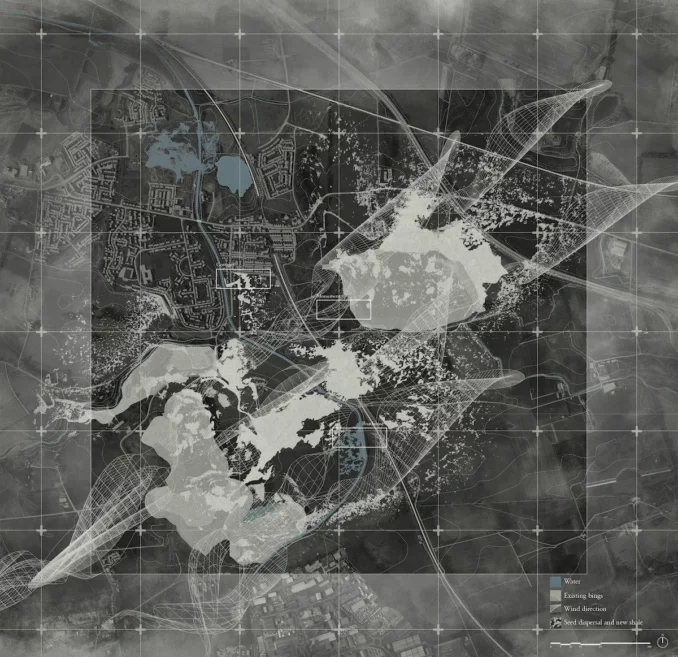
The project focuses on Winchburgh, an ex-mining village that is currently facing substantial growth, with a new development proposing to increase its population by 10,000 people over the next decade. I aim to challenge the proposed masterplan through a conceptual design that foregrounds the history of the village and its surrounding bings, and post-industrial biodiversity.
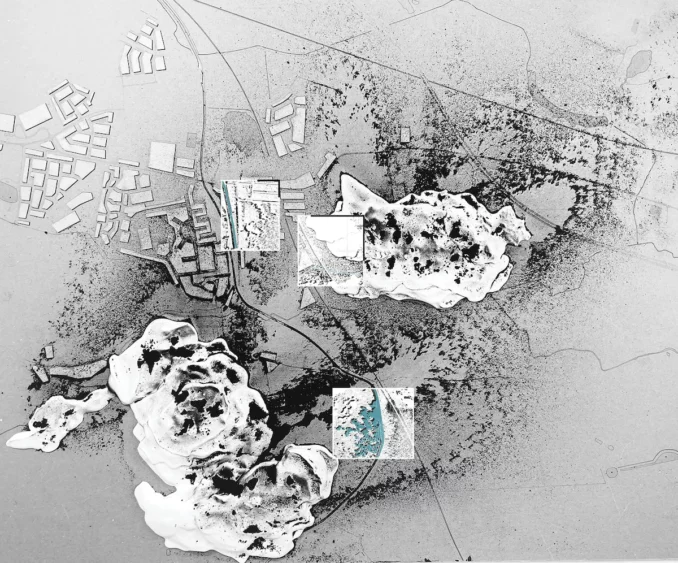
Taking inspiration from the bings themselves, and the process of primary succession, seed dispersal is used as a mechanism through which to design a new masterplan, allowing the process of dispersal to shape spatial strategies. Shale is used as a low-fertility substrate onto which seeds disperse; the biodiverse habitats found naturally on the bings thus become inextricably integrated into the fabric of the village, and their unique history is translated from remote, inaccessible islands to a central feature of Winchburgh. With the overall masterplan covering over 11.5km2, three key focus areas illustrate different elements of the proposed approach:
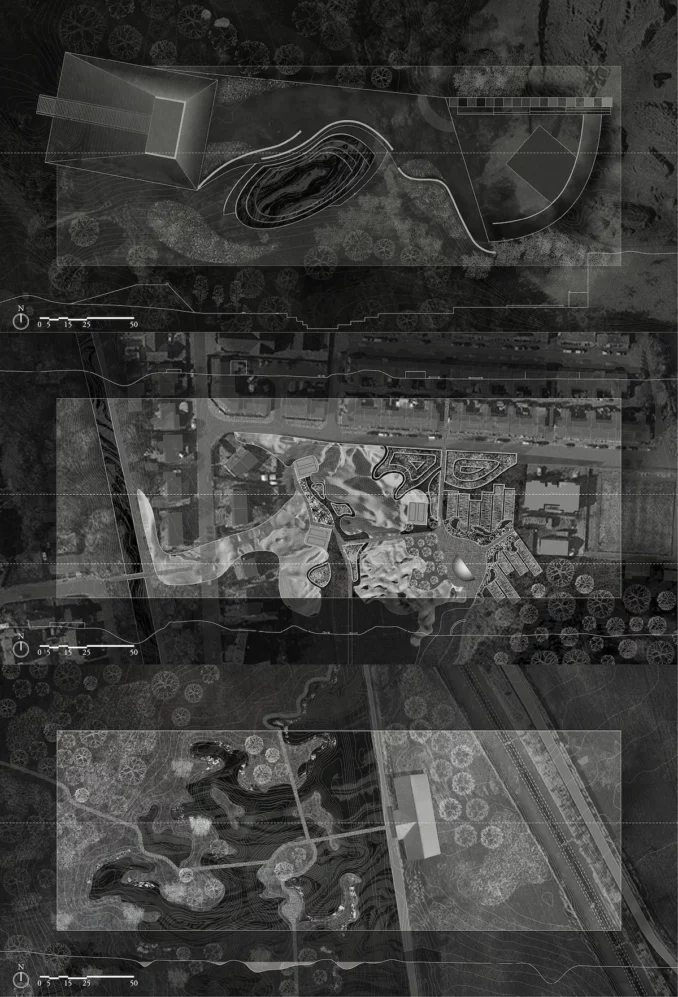
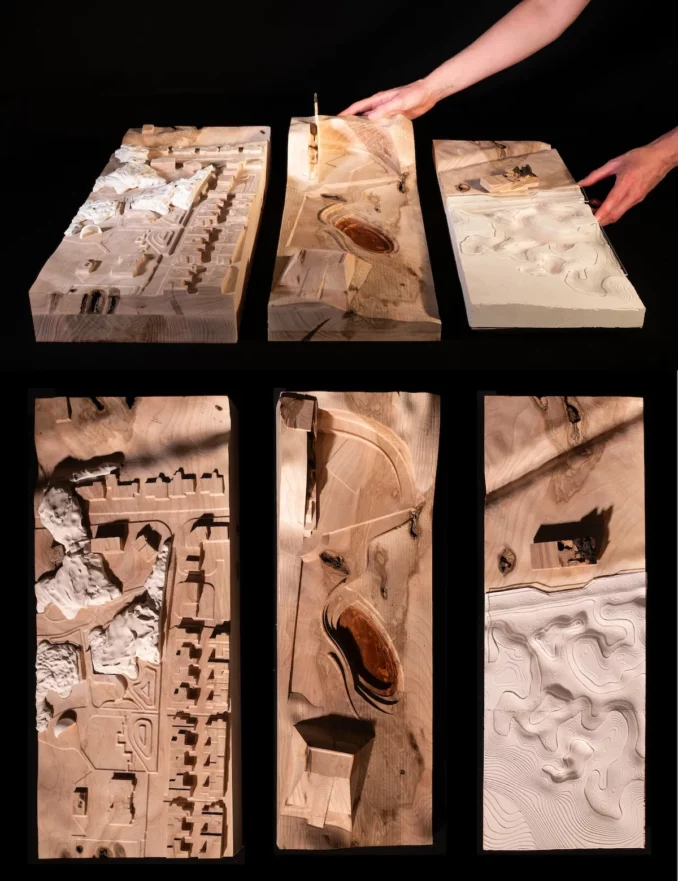
Monument
While the remaining bings are disappearing into the landscape, the Monument is designed as a memorial to them and to the environmental crises catalysed by the shale oil industry. It provides a space for annual village Gala days (a relic from historic mining communities), as well as other events, to take place.
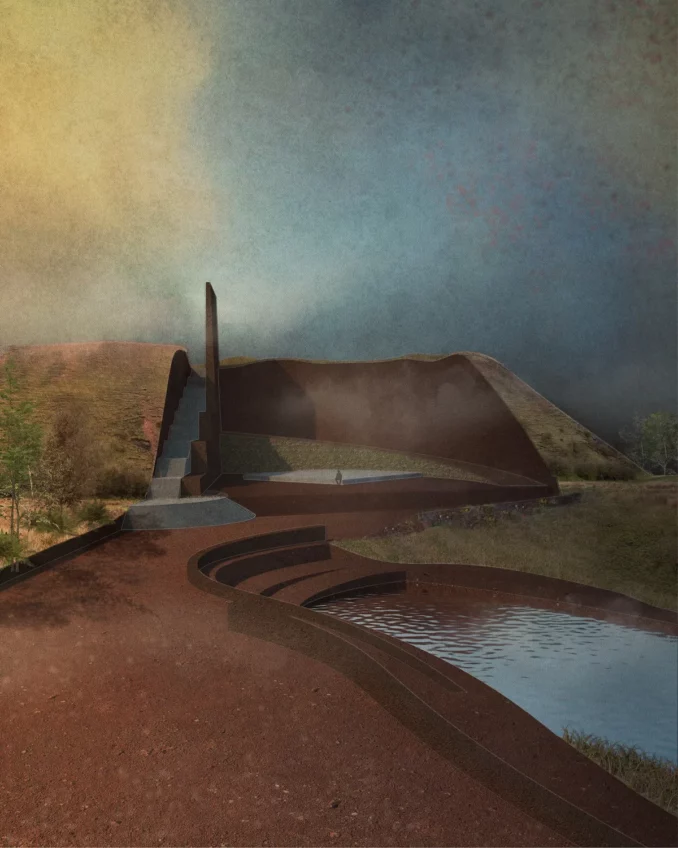
Cottages
As Winchburgh expands around the bings, the old miner’s cottages re-emerge as its new central space and a community park is created around them. Shale mounds become ecological islands, accessible at certain times of the year to disturb the process of primary succession, and allotments provide a space for people to grow food communally.
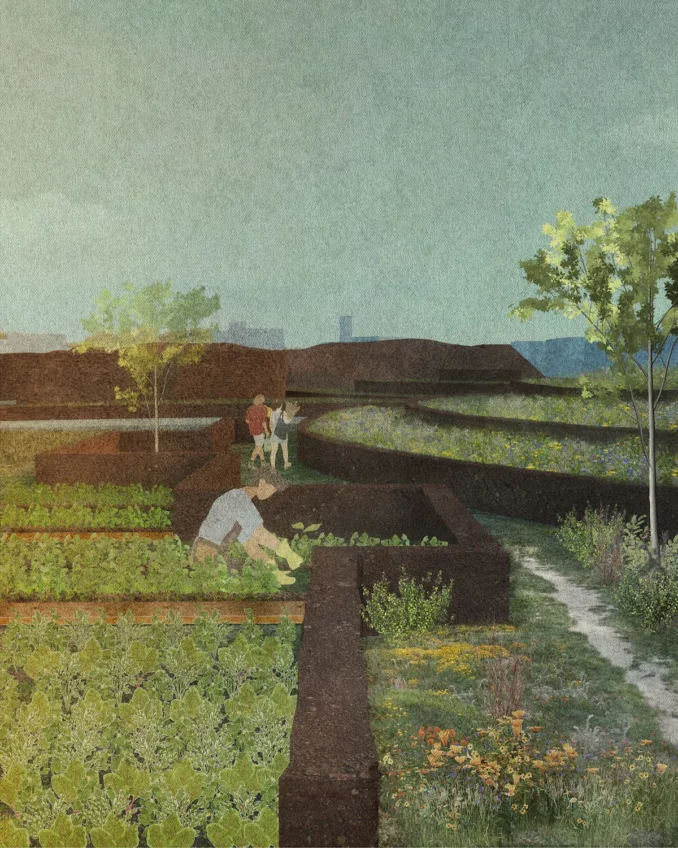
Boathouse
At the interface of Greendykes Bing and Union Canal, a wetland is created where two traces of Winchburgh’s industrial past merge. This provides a mechanism for seeds from Greendykes Bing to disperse via the canal, as well as giving people access to the water for recreational activities.
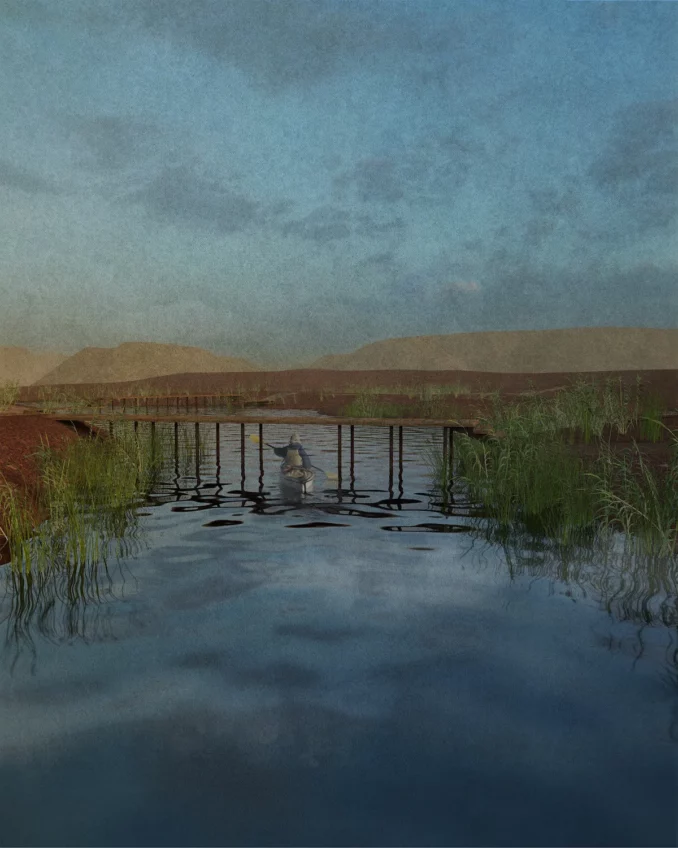
The project as a whole aims to retain the bings as a remote refuge from encroaching development, while simultaneously making them – and their unique materiality, ecology and history – an integral part of the expanding village. The proposal challenges the principle that a design is ever truly finished, instead creating a landscape that continues to evolve with and without human intervention. Via material re-use, planting and maintenance strategies, the design foregrounds local resources and extant ecological processes to develop a proposal that is unequivocally led by the landscape in which it exists.
Shalescapes of West Lothian: Reclaiming an Industrial Heritage
Student: Alice Carrington-Windo
University: The Bartlett School of Architecture, University College London
Design Tutors: Tom Budd, Hannah Corlett and Lyn Poon
Technical Tutor: Marco Cerati
